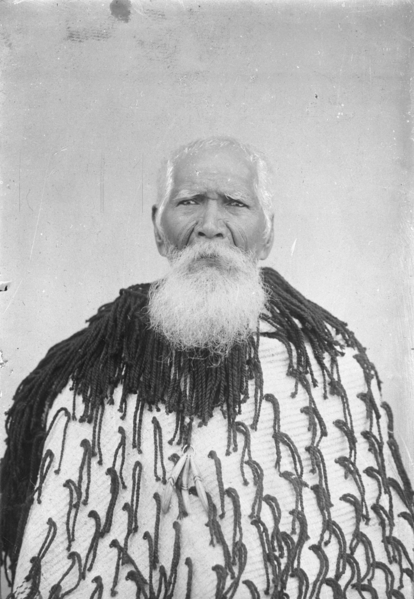 The Māori people of New Zealand historically wore a variety of cloaks, including hieke, korowai, kahu huruhuru, kahu kurīб kaitaka, and some more. Each style is different but equally cute. Māori weavers were and still are very skilled and creative. Their hand-crafted woven cloaks look gorgeous and are really functional – they protect their wearers (men, women, and kids) from harsh weather conditions and, at the same time, indicate the status of a person. Today, we’re going to talk particularly about the korowai cloak.
The Māori people of New Zealand historically wore a variety of cloaks, including hieke, korowai, kahu huruhuru, kahu kurīб kaitaka, and some more. Each style is different but equally cute. Māori weavers were and still are very skilled and creative. Their hand-crafted woven cloaks look gorgeous and are really functional – they protect their wearers (men, women, and kids) from harsh weather conditions and, at the same time, indicate the status of a person. Today, we’re going to talk particularly about the korowai cloak.
Māori traditional korowai cloak
Korowai cloaks are exquisite traditional garments intricately woven and adorned with muka fiber tassels known as “hukahuka”. The process of creating hukahuka involves dyeing the muka (flax fiber) and twisting two bundles into a single cord, which is then skillfully woven into the body of the cloak. Depending on the type of hukahuka used for decoration, various styles of korowai have emerged. For instance, korowai kārure feature tassels that evoke an unraveling effect, while korowai ngore boast hukahuka resembling playful pompoms. On the other hand, korowai hihima showcase undyed tassels, adding a distinct touch.

Portrait of a man wearing Māori cloak. Photo from Godber Collection, Alexander Turnbull Library
During Captain Cook's initial visit to New Zealand, korowai seemed to be scarce, as they were not depicted in drawings by his artists. However, by 1844, as George French Angas captured historical accounts of early New Zealand, korowai with striking black hukahuka had gained immense popularity. The hukahuka on exceptional korowai examples could reach lengths of up to 30 cm and were designed to move gracefully with every motion of the wearer. Unfortunately, many ancient korowai have lost their black hukahuka due to the dyeing process hastening the deterioration of the muka fibers.
The Māori korowai cloak is a garment showing the prestige and respect of its wearer and also the affiliation to the New Zealand cultural heritage.


